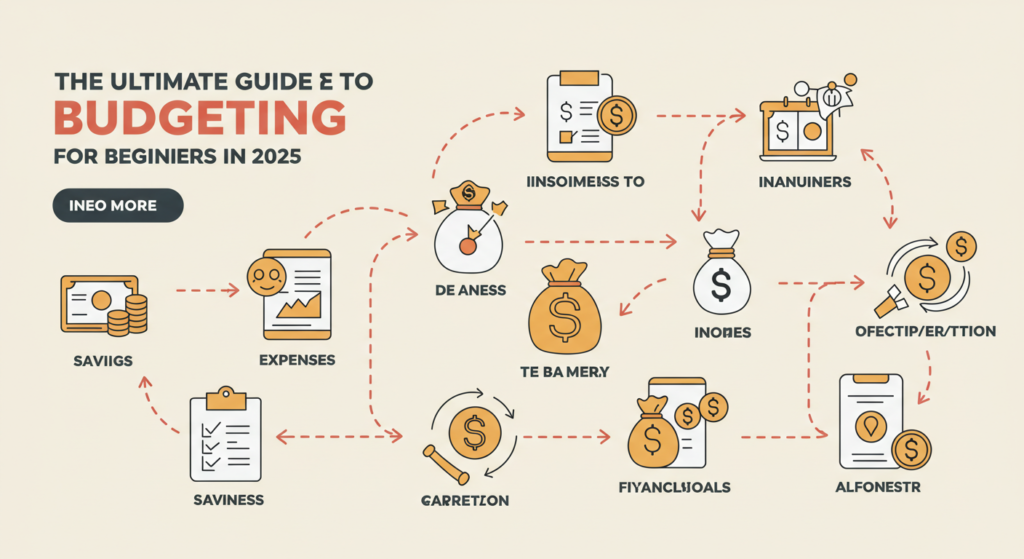The Ultimate Guide to Budgeting for Beginners in 2025

Budgeting is the cornerstone of financial stability, and starting in 2025, there are more tools and strategies than ever to help you manage your money effectively. Whether you're looking to save for a big purchase, pay off debt, or simply gain better control over your finances, this guide will walk you through everything you need to know about budgeting as a beginner.
Why Budgeting Matters
A budget isn’t just a restriction; it’s a plan for achieving your financial goals. By creating a budget, you can:
- Track where your money goes.
- Save for emergencies and long-term goals.
- Avoid unnecessary debt.
Step 1: Determine Your Financial Goals
Start by defining what you want to achieve with your budget. Common goals include:
- Building an emergency fund.
- Saving for a vacation or a house.
- Paying off credit card debt.
Having clear goals provides motivation and a roadmap for your budgeting efforts.
Step 2: Assess Your Income and Expenses
To create an effective budget, you need a clear picture of your finances. Follow these steps:
- Calculate Your Income: Include all sources of income, such as salary, freelance work, and side gigs.
- List Your Expenses: Break them into categories like housing, transportation, groceries, utilities, entertainment, and debt payments.
- Track Spending: Use budgeting apps or bank statements to track your spending over a month.
Step 3: Choose a Budgeting Method
In 2025, there are several popular budgeting methods to choose from. Pick the one that works best for you:
- 50/30/20 Rule: Allocate 50% of your income to needs, 30% to wants, and 20% to savings and debt repayment.
- Zero-Based Budgeting: Assign every dollar of your income a specific purpose, leaving zero unallocated.
- Envelope System: Use physical or digital envelopes to allocate funds for each category and avoid overspending.
Step 4: Use Budgeting Tools and Apps
Take advantage of modern technology to simplify budgeting. Some of the top tools for 2025 include:
- Mint: A free app that syncs with your accounts to track spending and savings.
- YNAB (You Need A Budget): A paid tool designed to help you plan every dollar.
- PocketGuard: Keeps you within budget by showing how much you can spend after accounting for bills and savings.
Step 5: Cut Unnecessary Expenses
Analyze your spending habits and identify areas where you can cut back. Consider:
- Canceling unused subscriptions.
- Cooking at home instead of dining out.
- Opting for public transportation or carpooling.
Step 6: Build an Emergency Fund
Set aside money for unexpected expenses, such as medical bills or car repairs. Aim to save at least three to six months' worth of living expenses.
Step 7: Review and Adjust Regularly
Your budget isn’t static. Life changes, and so should your budget. Review it monthly and adjust as needed to stay on track with your goals.
Common Budgeting Mistakes to Avoid
- Setting Unrealistic Goals: Be realistic about what you can save or cut back on.
- Ignoring Small Expenses: Even small, frequent purchases can add up over time.
- Failing to Track Progress: Regularly check your progress to ensure you're meeting your goals.
Final Thoughts
Budgeting doesn’t have to be complicated or restrictive. With clear goals, the right tools, and consistent effort, you can take control of your finances and work toward a brighter financial future. Start small, stay committed, and watch your financial confidence grow.
FAQs
1. What is the easiest budgeting method for beginners? The 50/30/20 rule is often the simplest for beginners as it provides clear spending guidelines.
2. How can I stick to my budget? Track your spending, review your goals regularly, and use tools or apps to stay accountable.
3. How long does it take to see results from budgeting? You can notice improvements in your financial habits within a few weeks, but significant results may take a few months of consistent effort.
Leave a Reply